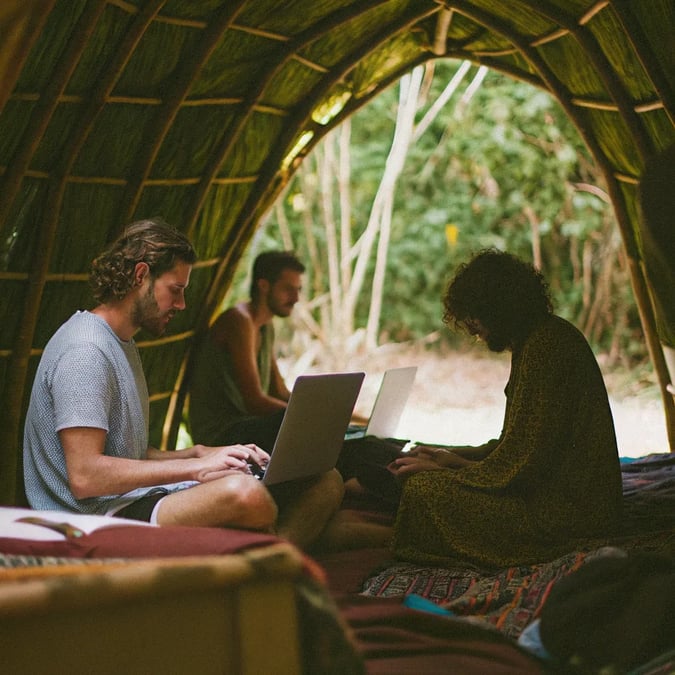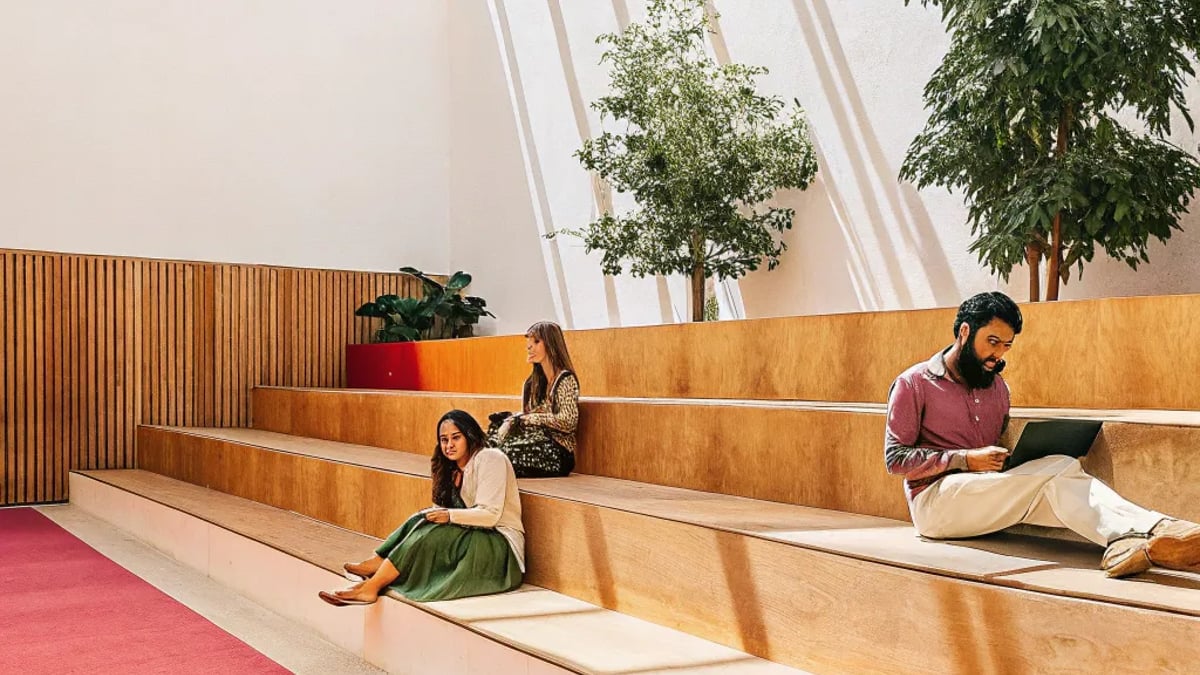
The digital nomad lifestyle continues to evolve in 2025, with co-living spaces becoming increasingly sophisticated to meet the needs of location-independent professionals. These spaces offer more than just a place to sleep—they provide community, networking opportunities, and amenities specifically designed for remote work. Let's explore some of the top co-living options that are making waves this year.
The Evolution of Co-Living for Digital Nomads
Co-living has transformed dramatically since its early days. What started as simple shared accommodations has evolved into purpose-built communities that balance privacy with connection. According to Nomadago, today's co-living spaces offer "a unique mix of communal living and private accommodations, allowing you to enjoy the best of both worlds."
The concept has gained tremendous popularity post-pandemic, with more professionals embracing location flexibility. This growth has led to innovative approaches in how these spaces are designed and managed, with a focus on creating environments where work, life, and community seamlessly blend.
Top Co-Living Destinations for 2025

Outsite Network (Global)
Outsite remains one of the most established names in the co-living industry. Founded in 2015, this network has expanded its global footprint considerably by 2025.
What makes Outsite stand out is its consistency across locations. According to a recent review, despite some downsides, many digital nomads return to Outsite properties because of their reliable amenities and the quality of community they foster. Each location features:
- High-speed internet (a non-negotiable for remote workers)
- Dedicated workspaces
- Community managers who organize events
- Comfortable private rooms with shared common areas
The downside? Outsite locations tend to be on the pricier side, and some locations get booked months in advance—especially during high season.
Anana Coliving (Lisbon, Portugal)

Lisbon continues to be a digital nomad hotspot in 2025, and Anana Coliving has established itself as one of the premier options in the city.
Based on a detailed review from someone who spent 2.5 weeks there, Anana offers:
- Reliable WiFi throughout the property
- Rooms specifically designed for digital nomads
- Twice-weekly communal dinners that foster genuine connections
- A vibrant location with easy access to Lisbon's attractions
What's particularly noteworthy about Anana is their attention to creating a balanced experience. They understand that digital nomads need focused work time as well as opportunities to socialize and explore.
Montino Coliving (Bali, Indonesia)
Bali has long been a digital nomad paradise, and Montino Coliving has become one of the standout options in 2025. According to Coliving Compass on Instagram, Montino is "on every digital nomad's radar this year."

What makes Montino special:
- Stunning pool and outdoor workspaces
- Villa-style living with modern amenities
- Strong focus on wellness, including yoga and meditation spaces
- Regular community events and skill-sharing workshops
- Proximity to Bali's famous beaches and cultural sites
The property strikes an excellent balance between luxury and affordability, making it accessible to different types of digital nomads.
Why Are Co-Living Spaces Gaining Popularity?
The Community Factor
One of the biggest challenges of the digital nomad lifestyle is loneliness. Co-living spaces directly address this by creating built-in communities.
"After working remotely for three years, I was craving genuine human connection," says Maya, a software developer I met during my stay at a co-living space in Portugal. "The weekly dinners and events made it so much easier to build meaningful relationships, even during short stays."
This sentiment is echoed across Reddit discussions where nomads actively seek recommendations based on community quality rather than just amenities.
Work-Optimized Environments
Let's face it—working from random cafes or hotel rooms gets old fast. Co-living spaces in 2025 have raised the bar on work facilities:
- Ergonomic furniture (a back-saver for long coding sessions)
- Meeting rooms for client calls
- 24/7 access to workspaces
- Backup power and internet solutions
These features eliminate the daily hunt for suitable work environments that many nomads face.
How to Choose the Right Co-Living Space?
What's Your Priority: Location or Community?
Sometimes you have to choose. Do you want to be in that dream destination even if the co-living options aren't ideal? Or would you rather join a thriving community in a less Instagram-worthy location?
I've made both choices at different times. When I needed to focus on a major project, I prioritized a space with excellent work facilities and a community of fellow professionals, even though the location wasn't at the top of my list. Other times, I've chosen a basic co-living setup in a bucket-list destination.
Budget Considerations
Co-living prices vary dramatically in 2025. European options, especially in cities like Lisbon and Barcelona, typically range from €1,000-2,000 monthly for a private room in a shared space. Southeast Asian options like those in Bali might run €600-1,200 for similar accommodations.
Remember to factor in:
- Length of stay (many places offer monthly discounts)
- Included amenities (some include meals, events, or cleaning)
- Hidden costs (deposits, membership fees)
Internet Reliability
This remains the #1 practical concern for most digital nomads. Before booking, ask specific questions about:
- Upload and download speeds
- Backup internet solutions
- Recent outages or issues
The best co-living spaces publish their internet speeds and have contingency plans for outages.
What's Not Working in Co-Living Spaces?
Not everything is perfect in the co-living world. Common complaints in 2025 include:
- Pricing that increasingly targets high-earning tech workers
- Some spaces becoming too party-focused, making them unsuitable for serious work
- Booking systems that require commitments months in advance
- "Community" that sometimes feels forced or superficial
These issues vary widely between properties, making research and recommendations crucial before committing.
Where is Co-Living Headed Next?
The co-living industry continues to evolve. Trends to watch include:
- Integration of AI for community matching and space management
- More niche-focused communities (tech, creative, entrepreneurial)
- Sustainable and eco-friendly properties gaining popularity
- Flexible membership models that allow access to multiple locations
As remote work becomes even more established, we can expect co-living to become more sophisticated in addressing the unique challenges of location-independent professionals.
Should You Try Co-Living in 2025?
If you're considering the digital nomad lifestyle or already living it, co-living spaces offer a compelling solution to many common challenges. They're not perfect for everyone—some people prefer complete independence or longer-term rentals—but they provide a valuable middle ground between isolation and overly social hostel environments.
The best approach? Try a shorter stay at a well-reviewed space to see if the co-living lifestyle works for you. Many nomads find that even a month in the right co-living environment can lead to connections and experiences that enhance their journey for years to come.
Have you stayed in any standout co-living spaces recently? What made them special? The landscape is constantly changing, and personal experiences often provide the most valuable insights for fellow nomads.
Tags

About Maya Caldwell the Author
Maya Caldwell is a seasoned digital nomad with over a decade of experience navigating the global work-from-anywhere lifestyle. She specializes in crafting innovative travel strategies that maximize productivity and adventure for remote workers.
Recommended Articles
Retirement Planning Essentials Every American Should Know
Learn essential retirement planning tips for a secure financial future, including types of plans and savings strategies every American should know.
Medicare Drug List Updates for 2026 Are Out
Discover the key Medicare drug coverage updates for 2026, including cost caps and price negotiation programs for better healthcare options.
Which iPhone Color Fits Your Style Best
In 2025, Apple tantalizes with its latest iPhone colors, each more chic and expressive than the last—think deep Titanium Blue, vibrant Product RED, and sophisticated Desert Sand. Whether your style leans toward muted sophistication, bold statements, or earthy tones, this guide reveals how your iPhone hue can harmonize with your wardrobe and lifestyle, elevating your personal tech as both a tool and statement piece. Dive in to discover which shade will perfectly reflect your personality and make you eager to flaunt your device.
Why More Adults Are Switching to Safety Footwear
In recent years, safety footwear has transcended its construction site origins, becoming a fashionable and practical choice for adults across various demographics seeking both comfort and protection in their daily wardrobes. With sleek designs, versatile features like non-slip soles and breathable materials, and a growing awareness of foot health, these modern safety shoes are not only reducing fall risks but also proving that style and functionality can go hand in hand. Discover how these shoes are revolutionizing everyday fashion and why more people are making the switch.
See the New iPhone Colors Everyone’s Talking About
Unveiling the dazzling iPhone 2025 color lineup, Apple has stunned audiences with striking hues like deep emerald, Alpine Blue, and Desert Titanium, making waves among tech enthusiasts and setting a new benchmark for smartphone aesthetics. Discover how these colors not only enhance the iPhone's premium feel but also influence its resale value, offering a fresh perspective on choosing the perfect shade for your next device.




